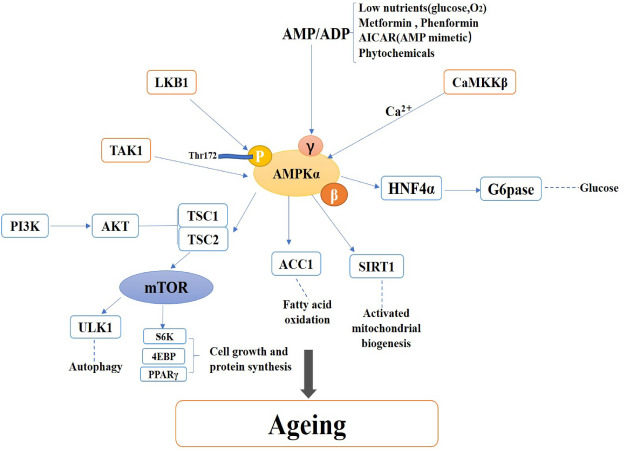
LncRNAs are involved in regulating ageing and age-related disease through the adenosine monophosphate-activated protein kinase signalling pathway


A long noncoding RNA (lncRNA) is longer than 200 bp. It regulates various biological processes mainly by interacting with DNA, RNA, or protein in multiple kinds of biological processes. Adenosine monophosphate-activated protein kinase (AMPK) is activated during nutrient starvation, especially glucose starvation and oxygen deficiency (hypoxia), and exposure to toxins that inhibit mitochondrial respiratory chain complex function. AMPK is an energy switch in organisms that controls cell growth and multiple cellular processes, including lipid and glucose metabolism, thereby maintaining intracellular energy homeostasis by activating catabolism and inhibiting anabolism. The AMPK signalling pathway consists of AMPK and its upstream and downstream targets. AMPK upstream targets include proteins such as the transforming growth factor β-activated kinase 1 (TAK1), liver kinase B1 (LKB1), and calcium/calmodulin-dependent protein kinase β (CaMKKβ), and its downstream targets include proteins such as the mechanistic/mammalian target of rapamycin (mTOR) complex 1 (mTORC1), hepatocyte nuclear factor 4α (HNF4α), and silencing information regulatory 1 (SIRT1). In general, proteins function relatively independently and cooperate. In this article, a review of the currently known lncRNAs involved in the AMPK signalling pathway is presented and insights into the regulatory mechanisms involved in human ageing and age-related diseases are provided.
